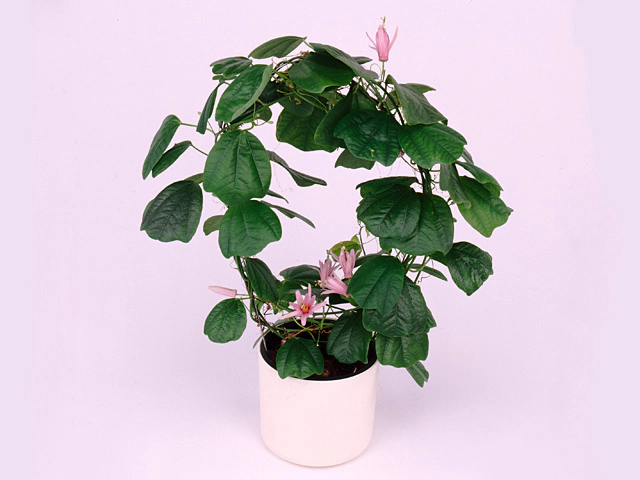Passiflora tulae

| Fruit type | Berry |
| Leaf margin | Undulate |
| Flower scent | Unscented |
| Leaf type | Foliage leaf |
| Flower color | Purple-light violet-084D |
| Leaf, general shape | Triangular |
| Structure (tissues) | Subshrubby/semi-shrubby |
| Plant, growth type | Climbing |
| Leaf colour, pattern | Bicolored |
| Flower color distribution | Multi-colored |
Passiflora tulae, commonly known as Passion Flower or Passionflower, is a fascinating plant that captures the imagination with its unique features. This plant exhibits a range of characteristics, including its fruit type, leaf margin, flower scent, leaf type, flower color, leaf shape, structure, growth type, leaf color and pattern, and flower color distribution.
The fruit of Passiflora tulae is classified as a berry, showcasing its succulent and juicy nature. This attribute makes it a desirable treat for many creatures in the plant's ecosystem. Meanwhile, the leaf margin of this plant is undulate, which means it has waves or ripples along the edges. This adds an interesting visual appeal to the foliage, drawing attention to its intricate details.
Surprisingly, Passion Flower does not emanate any scent from its flowers. Despite lacking a fragrance, the allure of these blossoms lies in their striking appearance rather than their scent. The flowers of Passiflora tulae are multi-colored, primarily displaying shades of purple and light violet. This vibrant mix of hues creates a captivating floral display that is sure to catch the eye of any observer.
Examining the leaves of Passiflora tulae reveals their unique traits as well. The general shape of the leaves is triangular, contributing to the overall aesthetic of the plant. Additionally, the leaves exhibit a bicolored pattern, enhancing their visual impact. The combination of colors on the leaves adds depth and complexity to their appearance, making them visually interesting.
In terms of structure, Passiflora tulae is classified as subshrubby or semi-shrubby. This means that it has characteristics of both shrubs and herbaceous plants. This structural combination adds versatility and uniqueness to the growth of the plant, allowing it to adapt well to various environments.
Regarding growth type, Passion Flower is a climbing plant. Its ability to climb and vine allows it to reach greater heights, maximizing its exposure to sunlight. This growth strategy is essential for the plant's survival and successful reproduction.
Overall, Passiflora tulae, or Passion Flower, is a captivating plant that enthralls with its berry fruit, undulate leaf margin, unscented flowers, foliage leaf, purple-light violet flower color, triangular leaf shape, subshrubby/semi-shrubby structure, climbing growth type, bicolored leaf color pattern, and multi-colored flower color distribution. Its array of unique features makes it an attractive addition to any garden or natural landscape, sure to impress both casual observers and dedicated botanists alike.
Market availability index by month:
| Jan. | Feb. | Mar. | Apr. | May | Jun. | Jul. | Aug. | Sep. | Oct. | Nov. | Dec. |
|---|---|---|---|---|---|---|---|---|---|---|---|
| - | - | - | 4 | 3 | 2 | - | - | - | - | - | - |